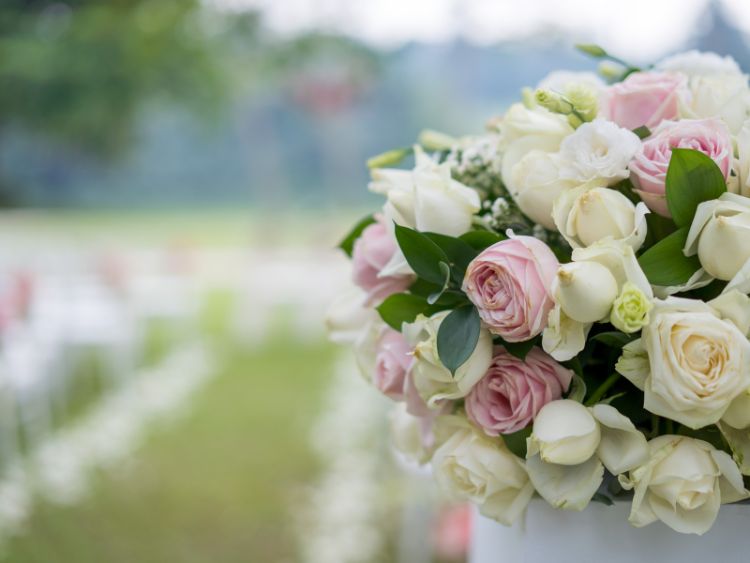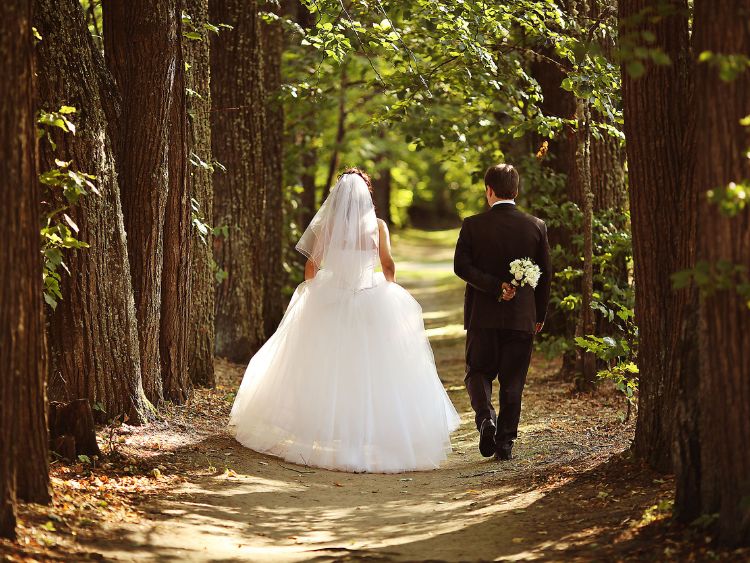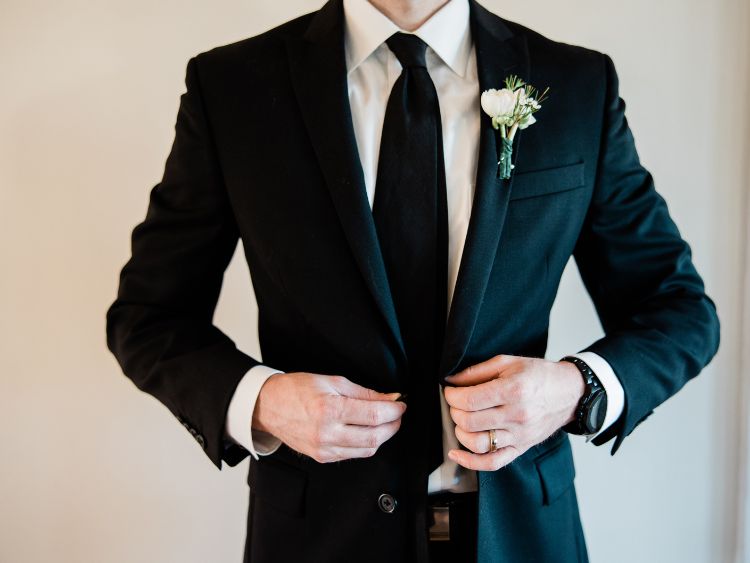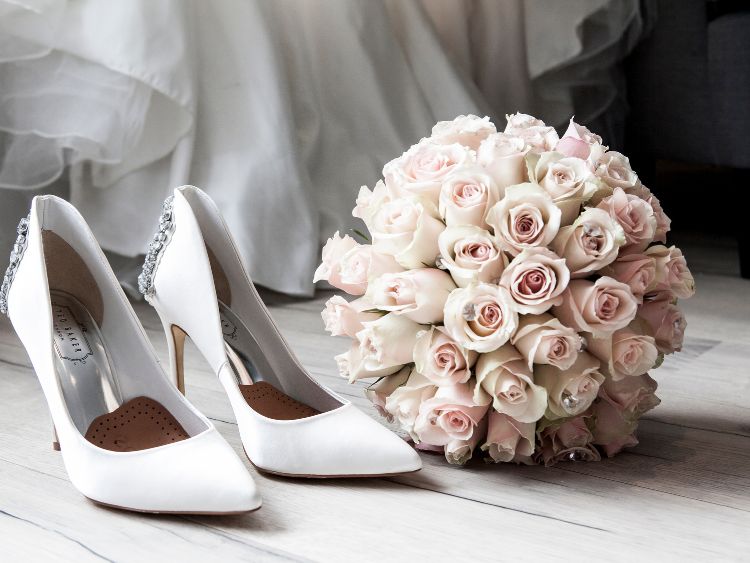Why Do Wedding Dress Codes Matter?
Wedding dress codes aren’t just about wearing something fancy; they’re about honoring the couple’s vision for their big day and showing respect for the event’s tone and location. These guidelines help guests choose appropriate attire, reducing the risk of wardrobe missteps that could overshadow the celebration. But what exactly do different wedding dress codes mean? Let’s break down the most common wedding dress codes so you can RSVP confidently.
Understanding the Main Types of Wedding Dress Codes
Wedding dress codes can range from ultra-formal to casual and everything in between. Here’s a quick breakdown to get you familiar with each one:
- White Tie
- Black Tie
- Black Tie Optional
- Semi-Formal or Cocktail Attire
- Beach Formal
- Casual
1. White Tie: The Pinnacle of Formality
White tie is the highest level of formality for a wedding. Think royal gala, red carpet, or black-tie gala, where sophistication is key.
- For Women: An evening gown is non-negotiable, preferably floor-length, made of luxurious fabrics like satin or silk. Long gloves and sophisticated jewelry complete the look.
- For Men: A black tuxedo with tails, a formal white dress shirt, a white vest, and a white bow tie. Finish with black patent leather shoes.
2. Black Tie: Classic and Timeless Elegance
Black tie is also formal but offers a tad more flexibility than white tie.
- For Women: A long gown is the norm, but a high-end cocktail dress may also work if it’s a sophisticated evening event. Avoid overly bright colors or flashy prints.
- For Men: A tuxedo with a black bow tie, white dress shirt, black vest or cummerbund, and polished black shoes are required.
3. Black Tie Optional: Flexibility Meets Formality
Black tie optional suggests formal attire but allows guests the option to slightly dress down.
- For Women: Floor-length dresses are ideal, but a formal cocktail dress or an elegant suit can work too.
- For Men: A tuxedo is preferred, but a dark suit with a tie is also acceptable. Just be sure it’s on the dressier side.
4. Semi-Formal or Cocktail Attire: Dressy Yet Comfortable
This is the most common dress code for weddings, providing a nice balance of style and comfort.
- For Women: A cocktail dress or a stylish jumpsuit is perfect. Keep the length to knee-length or midi and opt for colors that complement the event.
- For Men: A suit and tie are ideal, though no tux is necessary. Navy, gray, and charcoal suits are classic choices.
5. Beach Formal: Dressy Meets Relaxed
Beach weddings often require something dressy enough for the occasion but appropriate for the seaside.
- For Women: A flowy dress in a lightweight fabric is ideal. Sandals, especially wedges, work better than stilettos on sandy surfaces.
- For Men: A linen suit or dress pants with a light dress shirt (no tie needed) fits perfectly. Consider loafers or dressy sandals.
6. Casual: Laid-Back but Thoughtful
Casual dress codes are often seen at rustic, backyard, or low-key destination weddings. Even if the dress code says casual, try to look polished.
- For Women: A sundress or a nice blouse with a skirt or slacks works well. Just avoid anything that looks too much like everyday wear.
- For Men: Khakis or dress pants with a button-down shirt. Ties and jackets are typically unnecessary unless specified.
Tips for Navigating Wedding Dress Codes
Now that you know the main types of dress codes, here are some general tips to help you nail your look for any wedding:
- Stick to Neutral and Muted Colors: Avoid white, off-white, or anything too close to the bride’s color scheme.
- Pay Attention to the Venue: Consider the location when choosing your outfit. Outdoor or beach weddings may call for lighter fabrics, while indoor or evening weddings are better suited to heavier, darker materials.
- Respect Religious and Cultural Nuances: Some weddings may have dress codes tied to religious or cultural traditions. When in doubt, ask for clarification or choose more modest attire.
FAQs About Wedding Dress Codes
What should I do if there’s no dress code on the invitation?
When there’s no explicit dress code, use the invitation’s tone and the venue as clues. Typically, venues like banquet halls suggest formal attire, while outdoor or casual venues may allow for a more relaxed dress code.
Is it ever okay to wear white to a wedding?
Generally, it’s best to avoid white or anything close to it. Let the bride be the only one in that color. However, certain themes (like “all white” weddings) may allow guests to wear white. Always double-check if you’re unsure!
What’s the difference between semi-formal and cocktail attire?
They’re quite similar, with both falling between casual and black tie. Semi-formal leans slightly more conservative, while cocktail attire is often a little dressier and more festive.
Can I wear jeans if the dress code is casual?
In most cases, no. Even at a casual wedding, jeans can feel too relaxed. Stick to dress pants or khakis to avoid looking underdressed.
Conclusion: Dress to Impress and Celebrate!
Choosing the right attire for a wedding is more than just following tradition; it’s about showing respect for the couple and their big day. Whether you’re donning a tuxedo for a black-tie wedding or picking out a beachy dress for a seaside celebration, nailing the wedding dress code ensures you look your best while staying true to the couple’s vision.
Authoritative Resources:
- https://www.brides.com/wedding-dress-code-guide
- https://www.weddingwire.com/wedding-dress-code-guide



